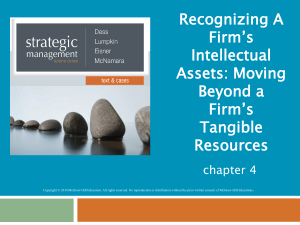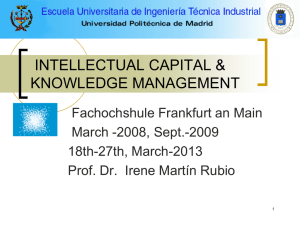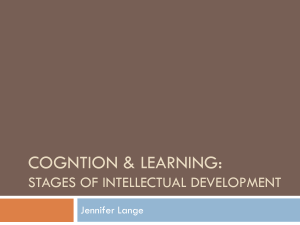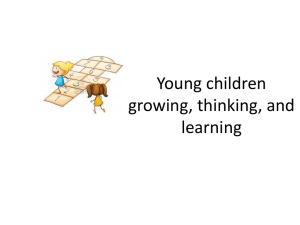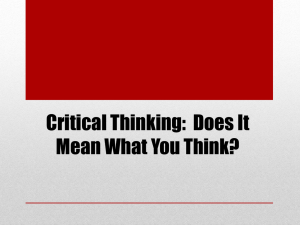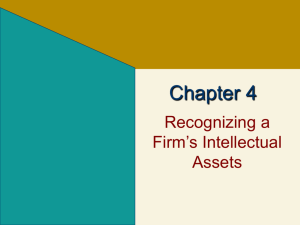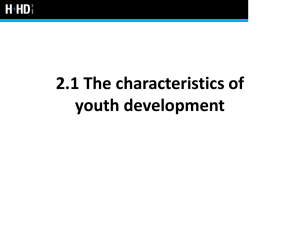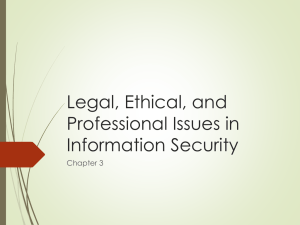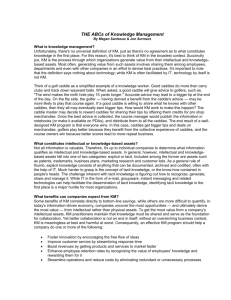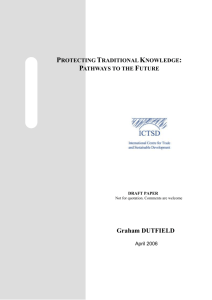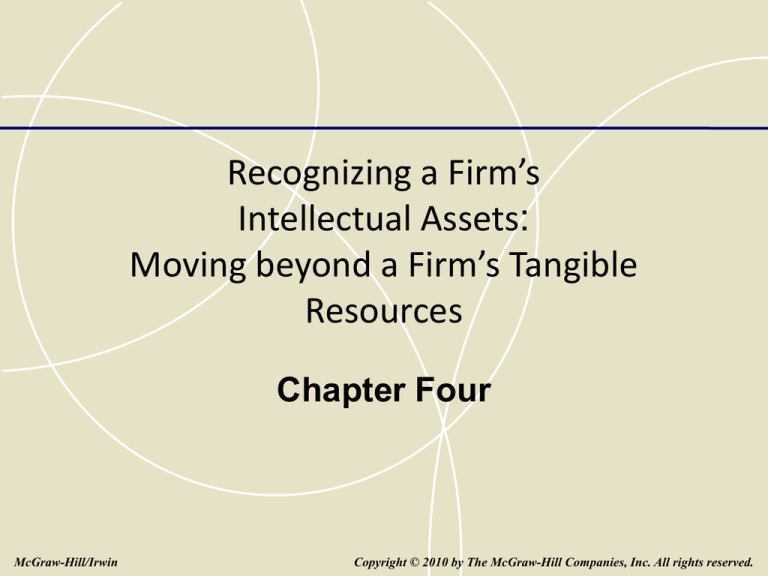
Recognizing a Firm’s
Intellectual Assets:
Moving beyond a Firm’s Tangible
Resources
Chapter Four
McGraw-Hill/Irwin
Copyright © 2010 by The McGraw-Hill Companies, Inc. All rights reserved.
Learning Objectives
After reading this chapter, you should have a
good understanding of:
LO1 Why the management of knowledge
professionals and knowledge itself are so
critical in today’s organizations.
LO2 The importance of recognizing the
interdependence of attracting, developing
and retaining human capital.
LO3 The key role of social capital in leveraging
human capital within and across the firm.
LO4 The importance of social networks in
knowledge management and in promoting
career success.
4-2
Learning Objectives (cont.)
LO5 The vital role of technology in leveraging
knowledge and human capital.
LO6 Why “electronic” or “virtual” teams are critical
in combining and leveraging knowledge in
organizations and how they can be made
more effective.
LO7 The challenge of protecting intellectual
property and the importance of a firm’s
dynamic capabilities.
4-3
The Central Role of Knowledge
in Today’s Economy
• Knowledge economy
wealth is increasingly created by effective
management of knowledge workers instead
of by the efficient control of physical and
financial assets.
4-4
The Central Role of Knowledge
in Today’s Economy
• Intellectual capital
the difference between a firm’s market value
and book value
a measure of the value of a firm’s intangible
assets
4-5
The Central Role of Knowledge
in Today’s Economy
• Intellectual capital (cont.)
reputation, employee loyalty and
commitment, customer relationships,
company values, brand names, and the
experience and skills of employees
4-6
Ratio of Market Value to Book Value for Selected
Companies
4-7
The Central Role of Knowledge
in Today’s Economy
• Human capital
individual capabilities, knowledge, skills, and
experience of the company’s employees and
managers
• Social capital
the network of relationships that individuals
have throughout the organization
4-8
The Central Role of Knowledge
in Today’s Economy (cont.)
• Knowledge
Explicit knowledge
Tacit knowledge
4-9
Knowledge
• Explicit
knowledge
knowledge that is
codified,
documented,
easily reproduced,
and widely
distributed.
• Tacit knowledge
knowledge that is
in the minds of
employees and is
based on their
experiences and
backgrounds.
4-10
QUESTION
Recently, a knowledge worker's loyalty to his or
her employing firm has __________ compared
to his or her loyalty to his profession and
colleagues.
A. Increased
B. Decreased
C. Remained the same
D. No correlation when
4-11
Human Capital: The Foundation
of Intellectual Capital
4-12
Attracting Human Capital
• Hire for attitude, train for skill
• Emphasis on
General knowledge and experience
Social skills
Values
Beliefs
Attitudes
4-13
Attracting Human Capital
• Sound recruiting approaches
Scanning pools of available candidates
Challenge becomes having the right job
candidates, not the greatest number of them
4-14
Attracting Human Capital
• Networking
Current employees may
be best source of new
ones
Incentives for referrals
4-15
Example
The top 5 MBA Employers in 2007, according to
Fortune Magazine
1. Google
2. McKinsey & Company
3. Goldman & Sachs
4. Bain & Company
5. Boston Consulting Group
Source: www.fortune.com
4-16
Developing Human Capital
•
•
•
•
•
Train and develop at all levels
Encouraging widespread involvement
Transferring knowledge
Monitor progress and track development
Evaluate human capital
4-17
Best Practices to Recruit and Retain Young
Talent
•
•
•
•
•
•
Don’t fudge the sales pitch
Let them have a life
No time clocks, please
Give them responsibility
Feedback and more feedback
Giving back matters
4-18
How to Get Hired
•
•
•
•
•
It helps to know someone
Play up volunteer work on your resume
Unleash your inner storyteller
No lone rangers need apply
Be open to learning new things
4-19
Retaining Human Capital
• Identify with organization’s mission and
values
People who identify with and are more
committed to the core mission and values of
the organization are less likely to stray or bolt
to the competition.
4-20
Retaining Human Capital
• Challenging work and a stimulating
environment
opportunities that lower barriers to an
employee’s mobility
within a company
4-21
Retaining Human Capital
• Financial and Non-financial Rewards
and Incentives
Rewards are a vital organizational control
mechanism
However, money may not be the most
important reason why people take or leave
jobs
Exodus of employees can erode a firm’s
competitive advantage
4-22
How Diversity Benefits the Organization
•
•
•
•
•
•
Cost
Resource acquisition
Marketing
Creativity
Problem-solving
System flexibility
4-23
The Vital Role of Social Capital
• Attraction, development and retention of
talent is a necessary but not sufficient
condition for creating competitive
advantage
• Knowledge workers often are more loyal to
their colleagues and profession than to
their employer
4-24
How Social Capital Helps
Attract and Retain Talent
• Hiring via personal (social) networks
Some job candidates may bring other talent
with them
Emigration of talent from an organization to
form start-up ventures
Can provide mechanism for obtaining
resources and information from outside the
organization
4-25
Social Networks: Implications
• Social network analysis
depicts the pattern of interactions among
individuals and helps to diagnose effective
and ineffective patterns
helps identify groups or clusters of individuals
that comprise the network, individuals who
link the clusters, and other network
members.
helps diagnose communication patterns and
communication effectiveness
4-26
A Simplified Social Network
4-27
Knowledge of Social Networks
• Closure
the degree to
which all members
of a social network
have relationships
with other group
members.
• Bridging
relationships
relationships in a
social network that
connect otherwise
disconnected
people.
Structural holes
4-28
Knowledge of Social Networks
Social networks deliver three unique
advantages:
• Private information
• Access to diverse skill sets
• Power
4-29
The Potential Downside of Social Capital
• Groupthink
a tendency not to question shared beliefs
• Tendency to develop dysfunctional human
resource practices.
• Can be expensive in terms of financial
resources and managerial commitment
4-30
Using Technology to Leverage
Human Capital and Knowledge
• Sharing knowledge and information
Conserves resources
Develops products and services
Creates new opportunities
4-31
Electronic Teams: Using Technology to Enhance
Collaboration
• Electronic teams
team of individuals that completes tasks
primarily through e-mail communication.
4-32
Electronic Teams: Using Technology to Enhance
Collaboration
• Advantages of electronic teams
have the potential to acquire a broader range
of “human capital”
can be very effective in generating “social
capital”
4-33
Electronic Teams: Using Technology to Enhance
Collaboration
• Challenges of electronic teams
teams suffer processes loss because of low
cohesion, low trust among members, a lack
of appropriate norms or standard operating
procedures, or a lack of shared
understanding among team members about
their tasks.
4-34
Electronic Teams: Using Technology to Enhance
Collaboration
• Challenges of electronic teams (cont.)
members are more geographically dispersed,
and become more susceptible to the risk
factors that can create process loss
4-35
Codifying Knowledge for Competitive
Advantage
• Tacit knowledge
Personal
experience
Shared only with
the consent and
participation of the
individual
• Explicit (codified)
knowledge
Can be documented
Can be widely
distributed
Can be easily
replicated
Can be reused many
times at low cost
4-36
QUESTION
The use of information technology has increased
in recent years in many organizations. This has
helped to:
A. Communicate information efficiently
B. Make more effective use of time in every
situation
C. Restrict social network growth
D. Create smaller social networks
4-37
Protecting the Intellectual Assets of the
Organization
• Intellectual property rights are more
difficult to define and protect than property
rights for physical assets
• If intellectual property rights are not
reliably protected by the state, there will be
no incentive to develop new products and
services.
4-38
Protecting the Intellectual Assets of the
Organization
• Dynamic capabilities
a firm’s capacity to build and protect a
competitive advantage, which rests on
knowledge, assets, competencies,
complementary assets, and technologies.
4-39
Protecting the Intellectual Assets of the
Organization
• Dynamic capabilities include the ability to
sense and seize new opportunities,
generate new knowledge, and reconfigure
existing assets
and capabilities.
4-40


